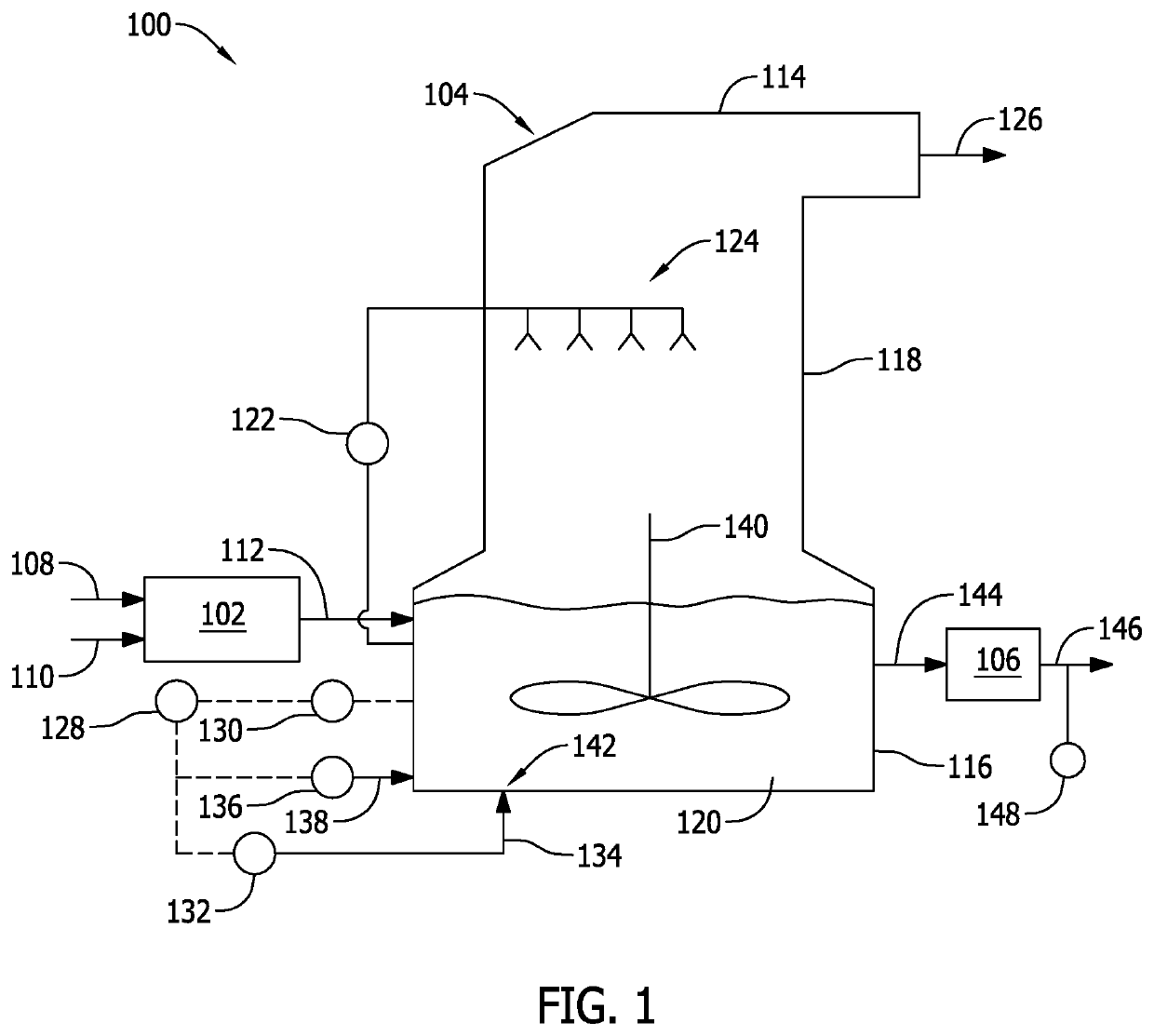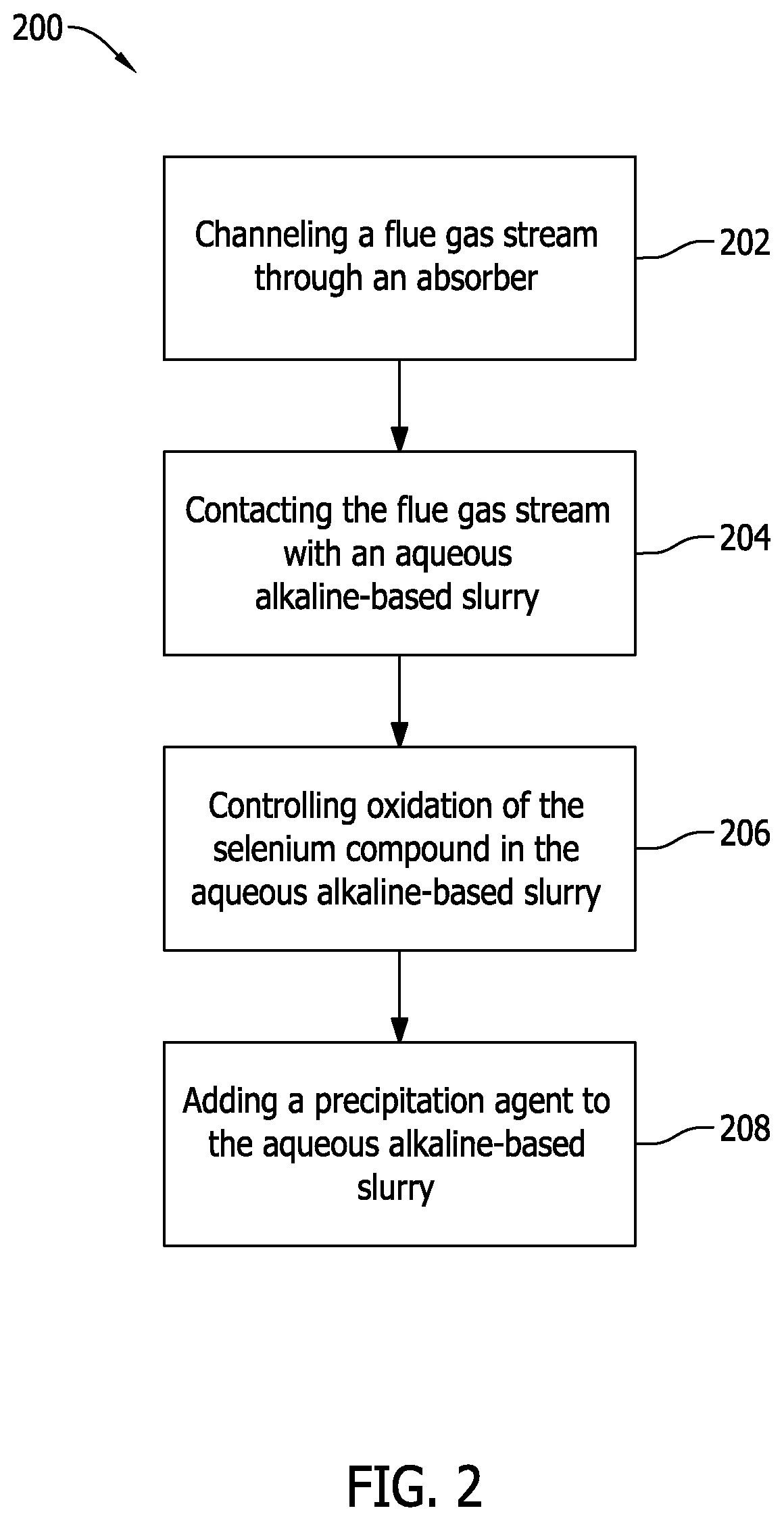Systems and methods of reducing selenium contamination in waste water
a technology of waste water and selenium, applied in the field of power production, can solve the problems of difficult and/or costly removal of certain contaminants from waste water stream, limited supply of fgd systems, etc., and achieve the effect of reducing contamination in waste water stream
- Summary
- Abstract
- Description
- Claims
- Application Information
AI Technical Summary
Benefits of technology
Problems solved by technology
Method used
Image
Examples
Embodiment Construction
[0009]The embodiments described herein relate to systems and methods of controlling selenium contamination with sulfite control and wet flue gas desulfurization (FGD) in a power plant. In the exemplary embodiment, a flue gas stream is channeled through an absorber prior to it being contacted by an aqueous slurry to remove contaminants from the flue gas stream. For example, in at least some power plants, the flue gas may contain trace elements such as selenium in the form of selenium dioxide. The selenium dioxide is soluble in the slurry and becomes selenite when absorbed in the aqueous solution. The FGD system described herein introduces oxygen into the slurry collected at the bottom of the absorber to produce a marketable byproduct known as FGD gypsum-calcium sulfate (CaSO4.2H2O). Although such gypsum is useful, one adverse result of FGD gypsum production is the production of selenate created by the reaction of selenite in the slurry with oxygen. Selenate may be difficult and costl...
PUM
| Property | Measurement | Unit |
|---|---|---|
| concentration | aaaaa | aaaaa |
| concentration | aaaaa | aaaaa |
| concentration | aaaaa | aaaaa |
Abstract
Description
Claims
Application Information
 Login to View More
Login to View More - R&D
- Intellectual Property
- Life Sciences
- Materials
- Tech Scout
- Unparalleled Data Quality
- Higher Quality Content
- 60% Fewer Hallucinations
Browse by: Latest US Patents, China's latest patents, Technical Efficacy Thesaurus, Application Domain, Technology Topic, Popular Technical Reports.
© 2025 PatSnap. All rights reserved.Legal|Privacy policy|Modern Slavery Act Transparency Statement|Sitemap|About US| Contact US: help@patsnap.com


